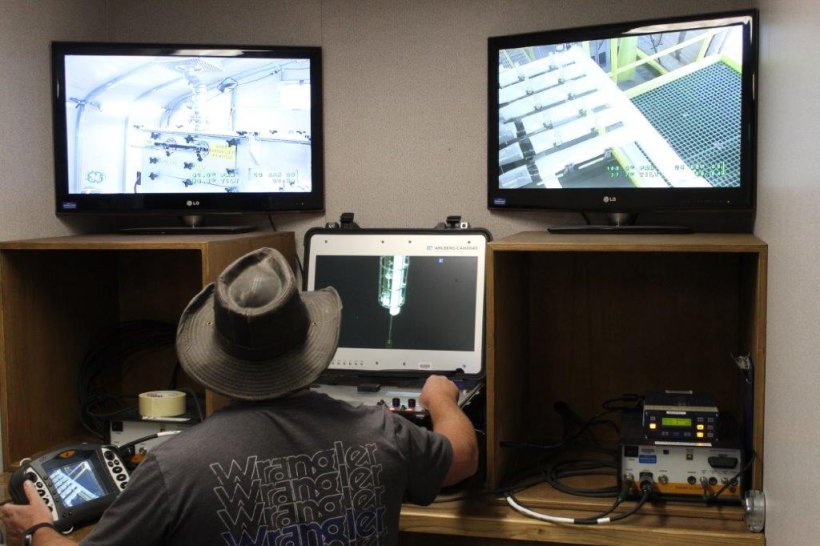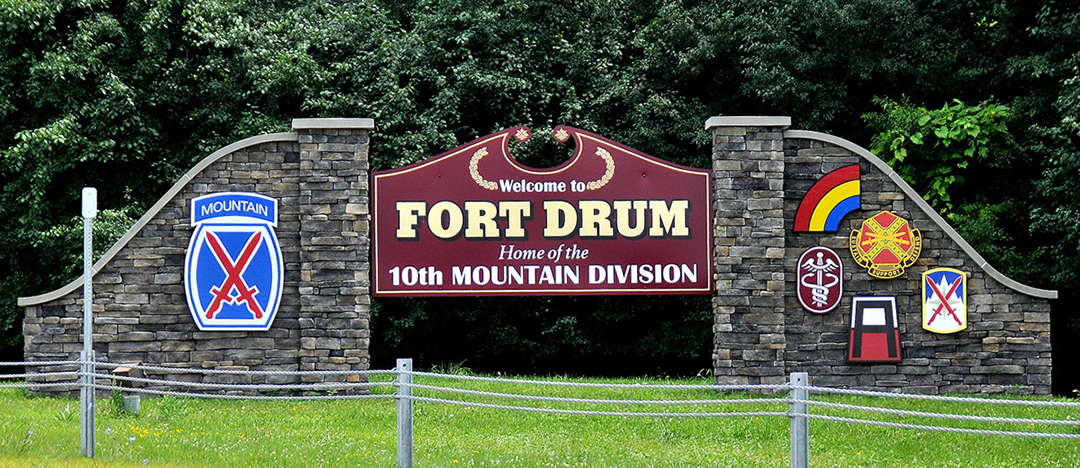Chapman (left) and Methven at the West Burton power station. (Photo: UKIFS)
Leadership of the United Kingdom’s STEP (Spherical Tokamak for Energy Production) fusion program has transitioned to U.K. Industrial Fusion Solutions Ltd. (UKIFS), a wholly owned subsidiary of the U.K. Atomic Energy Authority (UKAEA). UKIFS was established in February 2023 to lead a public-private partnership that will design, build, and operate the STEP prototype fusion energy plant in Nottinghamshire in England’s East Midlands region.
The Diablo Canyon plant. (Photo: Doc Searles)
The Nuclear Regulatory Commission is asking for public comment on its draft supplemental environmental impact statement for Diablo Canyon’s license renewal request.
An enhanced CT scan process developed at ORNL can cut the time required to examine 3D-printed parts by one sixth. (Image: DOE)
A software algorithm developed at Oak Ridge National Laboratory has reduced the time needed to inspect 3D-printed parts for nuclear applications by 85 percent, the Department of Energy announced on November 1, and that algorithm is now being trained to analyze irradiated materials and nuclear fuel at Idaho National Laboratory.
ANS members Eric Jebsen (from left), Jeff Terry, and Amanda Bachmann by the ANS Chicago Section display during setup for Nuclear Science Week at Illinois Tech. (Photo: Jeff Terry)
American Nuclear Society member Jeff Terry hosted this year’s Nuclear Science Week meeting at the Illinois Institute of Technology (Illinois Tech) on October 26. In his opening remarks, Terry, a physics professor at Illinois Tech, described the institute’s 12-year history of Nuclear Science Week events, going back to the 2012 meeting that included the Nuclear Clean Energy Indy car on display.
The Susquehanna nuclear power plant. (Photo: Talen)
The Federal Energy Regulatory Commission has denied plans for Talen Energy to supply additional on-site power to an Amazon Web Services’ data center campus from the neighboring Susquehanna nuclear plant in Pennsylvania.
November 1, 2024, 3:02PMNuclear NewsClaire Pieper and Dan Scholz A fatigue management program is used at
Xcel’s Monticello nuclear plant. (Photo: Indeavor)
Fatigue has been identified as a major risk factor in industrial accidents. According to the National Safety Council, 13 percent of workplace injuries can be attributed to fatigue.1 Other research indicates that working 12 hours per day is associated with a staggering 37 percent increase in risk of injury.2 Considering fatigue was a contributing factor to major nuclear accidents at Chernobyl and Three Mile Island, it makes sense that the Nuclear Regulatory Commission imposes hefty fines to ensure strict adherence to its fatigue management regulations—particularly, Code of Federal Regulations Title 10, Part 26, “Fitness for Duty Programs.”
The West Valley Demonstration Project in western New York. (Photo: DOE)
The Department of Energy’s Office of Environmental Management announced it has awarded a 10-year, $3 billion contract to West Valley Cleanup Alliance (WVCA) for decommissioning and demolition work at the West Valley Demonstration Project in western New York. WVCA is a newly formed limited liability company made up of BWXT Technical Services Group, Jacobs Technology, and Geosyntec Consultant. Teaming subcontractors include Perma-Fix Environmental Services and North Wind Portage.
Using cameras placed inside a temporary shelter, nuclear chemical operator Joe McCoy monitors the pretreatment activities of the Hanford Site’s TBI demonstration. (Photo: DOE-EM)
The Department of Energy’s Office of Environmental Management said that contractors have completed the treatment of 2,000 gallons of radioactive and chemical waste as part of the Hanford Site’s Test Bed Initiative project, which aims to demonstrate the feasibility of alternative options for retrieving and treating low-activity tank waste at the site in Washington state.
An aerial photo of Three Mile Island nuclear power plant. (Photo: Constellation)
The pursuit of returning two of the country’s retired nuclear plants into service is not only unusual—it is unprecedented and promises to make history.
That’s according to a piece coauthored by former assistant secretary for nuclear energy Katy Huff in the Bulletin of the Atomic Scientists regarding plans from Holtec and Constellation to restart Michigan’s Palisades plant and Pennsylvania’s Three Mile Island Unit 1, respectively.
The Ignalina nuclear power plant in Lithuania. (Photo: INPP)
Chantilly, Va.-based Amentum has been awarded a 7-year contract estimated to be worth €5.5 million (about $6 million) to consult on the dismantling of steam drum separators in Units 1 and 2 of Lithuania’s Ignalina nuclear power plant. Once the country’s largest generator of electricity, Ignalina was permanently shut down in 2009 and the plant’s two RBMK-1500 reactors are expected to be fully decommissioned by 2038.
The municipality of South Bruce announces the unofficial results of the referendum to determine if South Bruce would be a willing host for a proposed deep geological repository. (Photo: NWMO)
The municipality of South Bruce, located near the Bruce nuclear power plant in southwestern Ontario, voted narrowly in favor of being a willing host to a potential deep geologic repository for Canada’s spent nuclear fuel. The official declaration of results from the municipality showed that 51 percent of South Bruce residents voted in favor of the referendum, with 1,604 voting "yes" and 1,526 voting "no." Voter participation was 69 percent, surpassing the 50 percent voter turnout required to make the vote binding by law.


















